Fishing Roundup | When the bugs start biting, other things do, too; get your spray and get out
Yep, they’re biting.
Maybe you’ve noticed, too.
The first sign came a couple days ago, standing outside a local Jimmy Hula’s, where the only fish to be found would be inside a tortilla wrap.
Nope, this bite was more familiar and not nearly as exciting.
That’s right, the no-see-ums are making themselves felt, if not, you know, seen.
The cultured folks call them midges, but by whatever name you prefer, do yourself a favor and don’t actually try to see one. Some unfortunate research led to magnified photos of these pests that generally top out at 1 or 2 millimeters in length.
Thank the Lord. Add a couple more inches to those things, you’d never leave the house. Looks like something Vincent Price would conceive in the la-BOR-a-tory.
But we’re not here to make springtime homebodies out of you. Twentieth-century whitecoats gave us a couple miracles of the modern age, aside from remote control and relaxed-fit jeans: Bug spray and sunscreen.
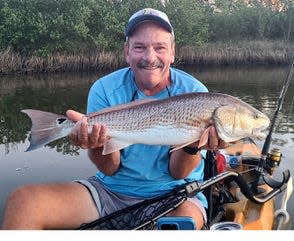
CLAW IT The generous stone crab will feed you today, and again a year later
And here’s their recommendation on that life-saving combo: Apply sunscreen first and give it 10-15 minutes to absorb into the Florida-toughened leather wrap you call skin. Then apply the bug spray and go have yourself a day.
Take care.
Oh … what’s that? For a minute there, kinda forgot why we’re here.
Here’s the good news on the no-see-ums. When they start biting, so do a lot of fish that don’t get overly busy until this Gregorian transition from March to April. The temps get into the 80s and stay there, the water subsequently warms, and Mr. Trout and Mr. Cobia, among many others, spring to life.
The snakes also stretch their legs and shed their skins, but that’s another horror story for another day.
Halifax/Indian River
Black drum, mangrove snapper and sheepshead are entertaining the folks on Ike Leary’s Granada Pier in Ormond Beach, in the shadow of the big bridge.
Throughout Ormond, the Tomoka Basin, etc., you don’t need to go on the backwater hunt so much now that the water temp is “fishy.”
Down south around Ponce Inlet, snook and redfish are showing off.
“Live pinfish have been working great,” says Capt. Jeff Patterson (Pole Dancer charter). “Inshore, there’s been a good flounder bite, as well as seatrout and redfish.”
Capt. Jeff expects to start seeing tarpon along the beach soon, which means they’ll make their way through the inlet’s inbound lanes soon thereafter.
Surf
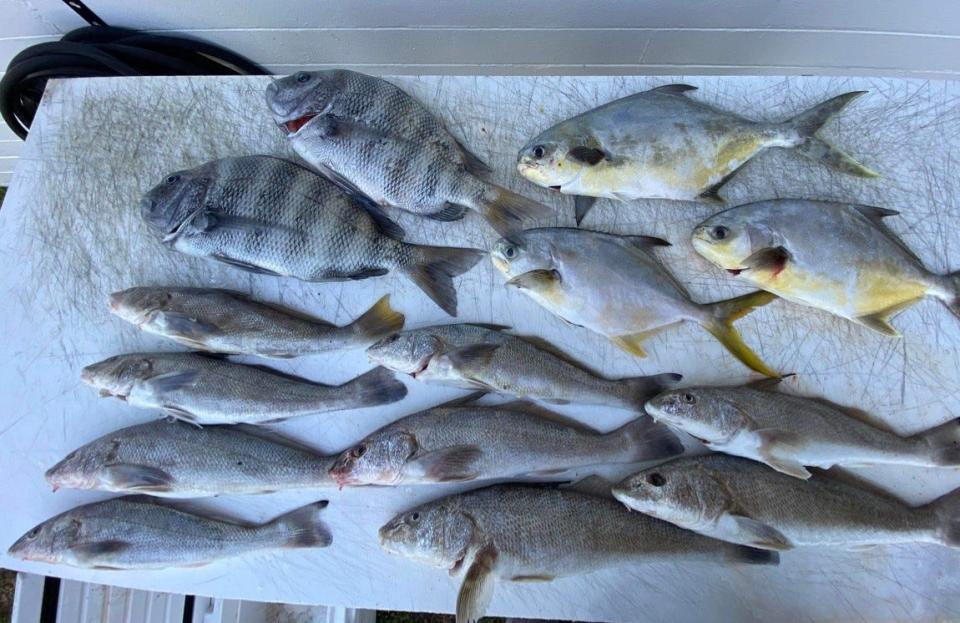
The water is a tad dirty still, but the springtime run seems to put more stock in the calendar than the conditions.
Pompano remain the big attraction, of course, but the whiting are thick as thieves and sheepshead are also mixing up the action. Plenty of sailcats and sharks, too, if you like big fights and precision releases.
Chris Mansfield (Reel Healin’ Outdoors) says he’s been using sandflea-flavored Fishbites tipped with shrimp. For hardware, he likes the Sinker Guy’s Bruno rig with a 4-ounce Sputnik sinker. For variety, he’ll also use the Green Get’M rig, which might be worth a look-see on the website (GreenGetMrigs.com). Just what you need, right, another enticement to buy tackle!
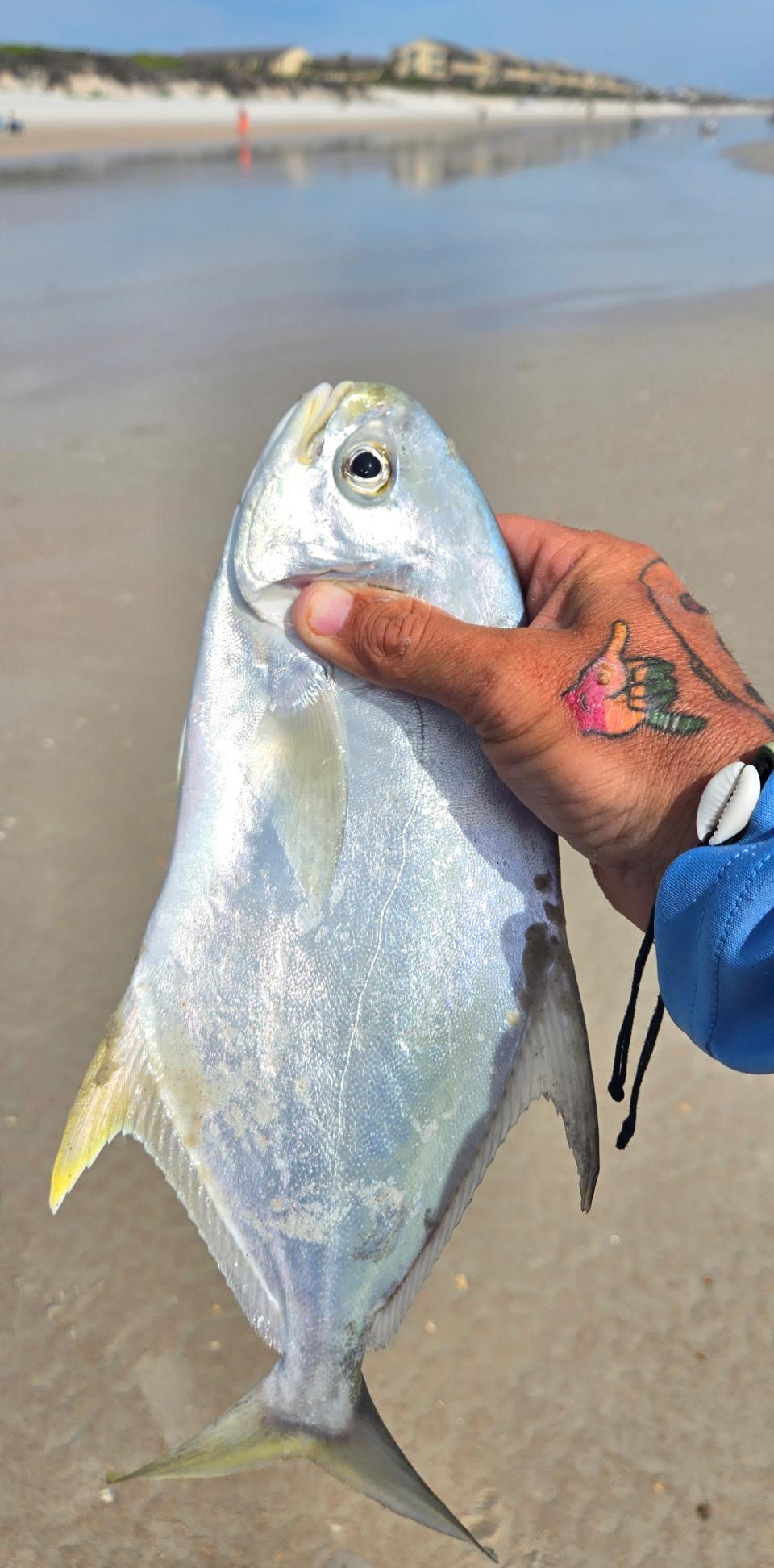
“It seems everyone from Daytona Beach Shores to New Smyrna Beach are getting what they like,” says Marco Pompano, who commands his post in Wilbur by the Sea most days. “The early-morning bite has been on fire. Crab knuckles and sandfleas are what the pompano like best.”
Offshore
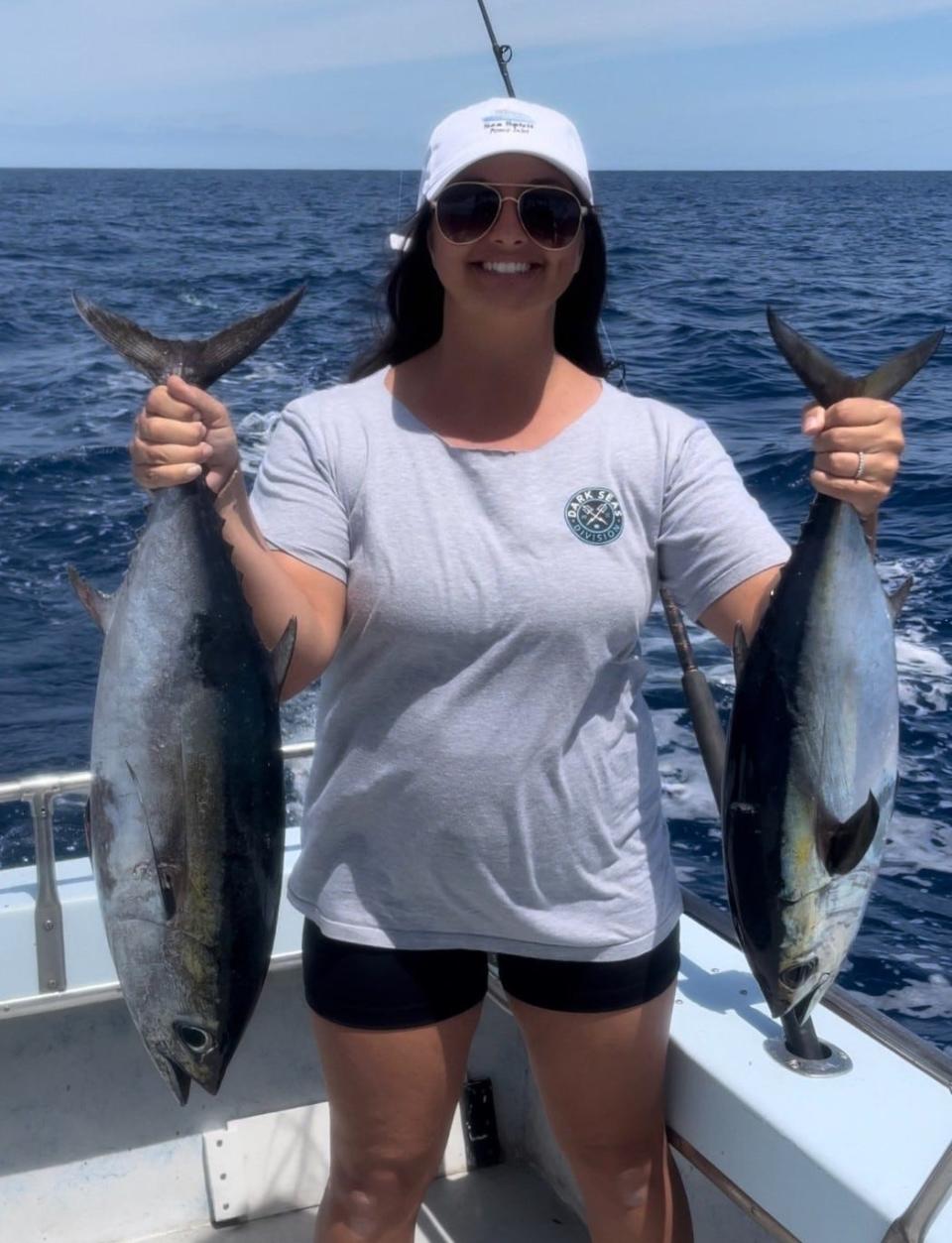
Capt. Scott Housel (Sudden Strike charter) confirms our current “sweetspot” on the calendar.
“April, May and the first half of June should be prime season for mahi,” he says. “As we move into June, water temps will increase into the high 70s and 80s. When this happens, mahi, wahoo and tuna spread out and continue to migrate north.”
Also, we're approaching the pattern of incoming and pop-up thunderstorms that can hamper or redirect an offshore trip. Capt. Scott trusts his own eyeballs, but for backup, says he prefers the SiriusXM satellite weather mapping.
Lane and mangrove snapper are populating artificial reefs these days, and grouper season opens May 1 for the oh-so-wide variety of that great species.
Capt. Jeff Patterson checks back in to say he’s hearing chatter about cobia in the nearshore waters just off the beach.
Also, he says, “I saw a bunch of schools of bait and thousands of Spanish mackerel out there early this week.”
St. Johns
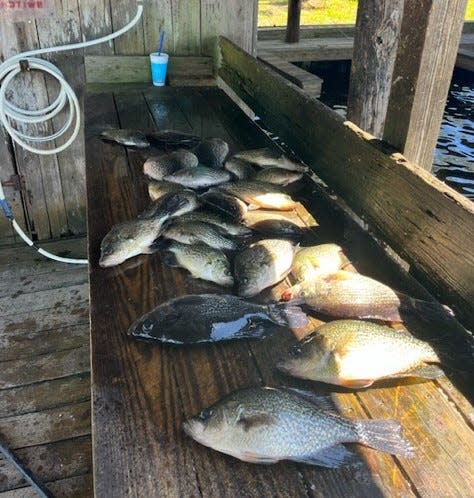
Everything is biting.
So says Highland Park Fish Camp regular Don McCormick.
While bluegill and shellcrackers are making their beds, specks can still be had if you change your depth.
“Find deeper water, especially in bends with over-hanging trees,” Don says of the speck’s warming-water hangouts.
Hook, line and clicker: Send us your fish pics
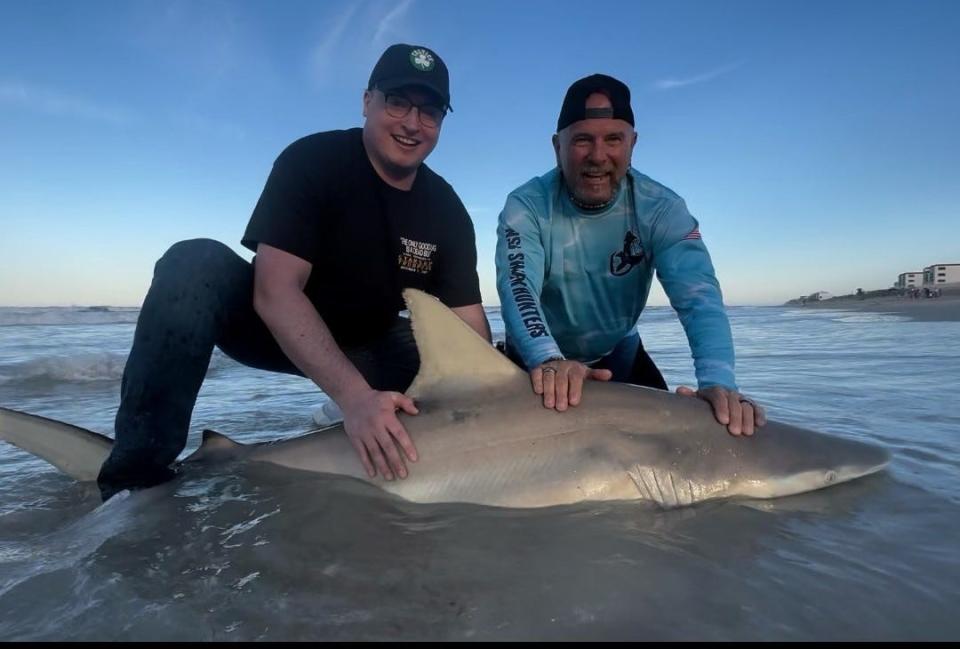
We want to see your most recent catch. Email your fish photos to ken.willis@news-jrnl.com.
Please include first and last name of angler(s), as well as type of fish (we're occasionally stumped). All are included with our online fishing report, and some occasionally make the print edition.
Do I need a fishing license?
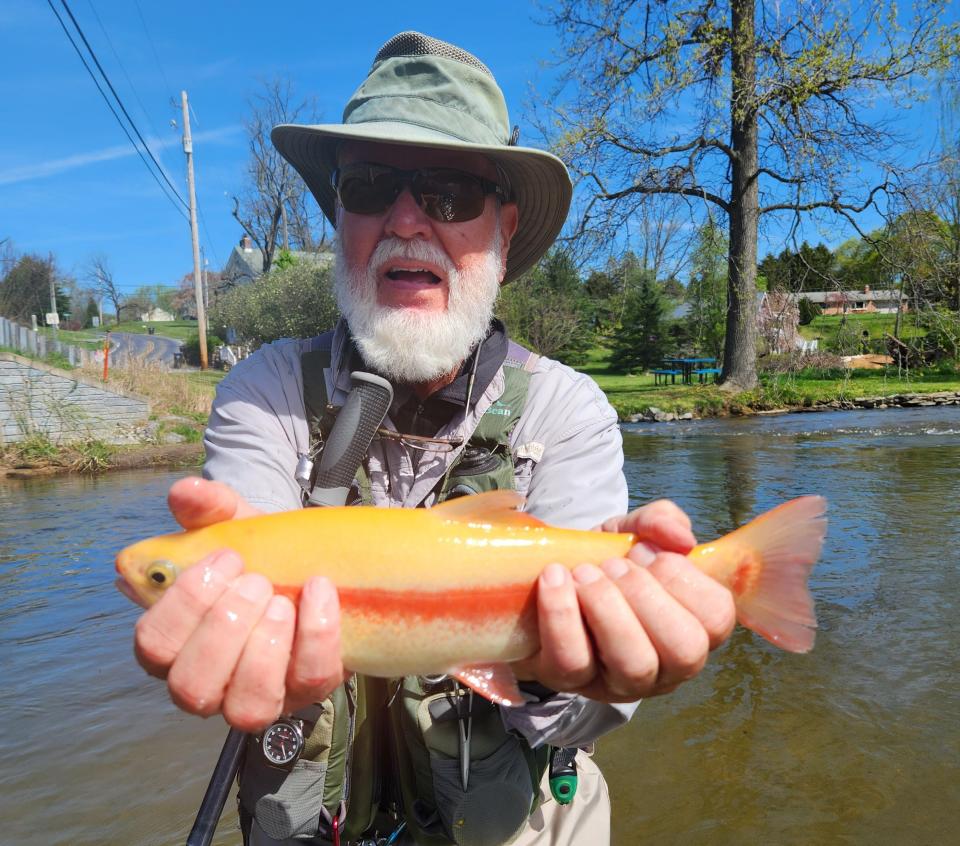
You can find all the license info, including exemptions, on Florida's Fish and Wildlife Commission website: MyFWC.com. But the basics are: No: If you're 65 or older, 15 or younger, you don't need a license. “Probably” Not: If you're fishing with a licensed guide or charter boat, both of which often purchase commercial licenses that cover their customers. Yes: Most everyone else, including visitors from other states. Yes: Even if you're a shore-based angler (shoreline, dock, pier, bridge, etc.), and even if fishing with a shore-based guide. However: The shore-based license is free . . . But: You still need to register for that free license.
Where do I get a license and what does it cost?
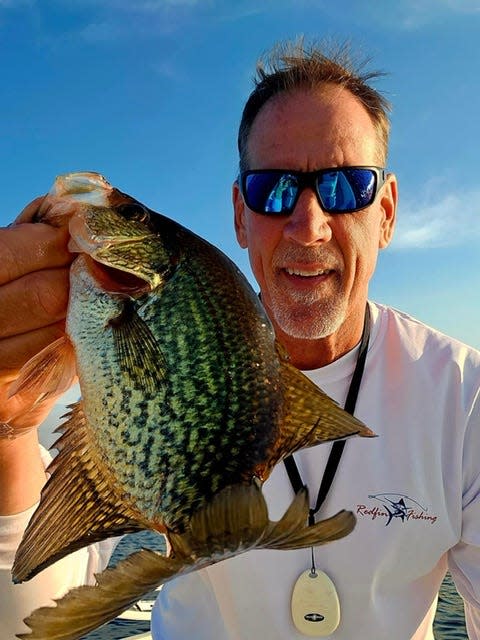
Many bait shops sell licenses, as do the bigger retailers (Bass, Dick's, Walmart, etc.). Florida's FWC uses a third-party site for buying or renewing fishing licenses: GoOutdoorsFlorida.com. The cost: $17 for an annual license. Don't forget: Whether you're fishing fresh or saltwater, you need the specific license. Freshwater and saltwater licenses are both $17 annually.
I’m here on vacation, do I need a license?
Yes you do, and they're also available at GoOutdoorsFlorida.com or certain bait shops and big retailers. Cost: $17 for three days, $30 for seven days, $47 for a year. Also: Non-residents need to purchase that license even if they're just fishing from shoreline or shore-based structures. (Florida residents need that license, too, but they're free.)
This article originally appeared on The Daytona Beach News-Journal: No-See-Ums are a pain, but they're a quality signal | Daytona Fishing

